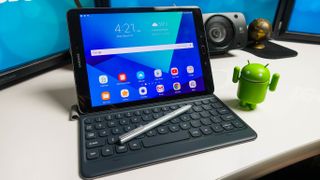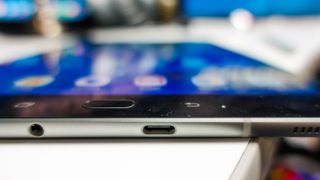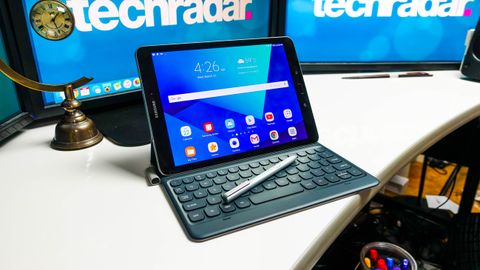Why you can trust TechRadar
Verdict
The Samsung Galaxy Tab S3 is the best Android tablet yet, and it’s built to last with 2-in-1 S Pen and keyboard capabilities, a beautiful HDR-ready screen and four bumping stereo speakers.

The iPad Pro has met its match when it comes to value. Samsung matches all of Apple’s major hardware features, and adds the S Pen stylus. You’ll have to pay extra for the keyboard case, but it’s at least cheaper than Apple’s keyboard attachment, and it wraps around the entire tablet. The microSD card slot puts Samsung over the top.
Value isn’t everything, though. It’s not a guaranteed universal recommendation; no Android tablet is at this price point. The iPad still has better software and large-scale app support. And while Android Oreo and TouchWiz have closed the gap, multitasking on a tablet isn't enough for productivity pros who can opt for a slightly thicker laptop at around the same price.
It’s the best Android tablet today, but just be aware that its solid entertainment value leans more heavily on the tablet side of its 2-in-1 classification, at the expense of your productivity efforts.

Who’s this for?
You want the best tablet, and demand only Android. That’s pretty much the audience for the Samsung Galaxy Tab S3. It has a finely crafted design, powerful AV capabilities and high-end tablet specs, even if they’re the guts of many 2016 smartphones. It’s future-proofed enough with the HDR-ready screen, but you’ll have to make do with the limited HDR video content out there for now.

Should I buy it?
The Galaxy Tab S3's chipset is starting to feel ever more dated, but if you want high-end media skills at what's now a slightly more mid-range price, this is the best tablet to get. And the keyboard accessory offers a way to stay productive, if you can slow your work speed down to meet the pace of Android multitasking.

This Game Boy-styled MagSafe stand just tickled my retro-gaming synapse – now all I need is a matching controller for Nintendo emulators

AI Explorer could revolutionize Windows 11, but can your PC run it? Here's how to check

Netflix's Wednesday season 2 cast clicks into gear with Westworld star addition as Apple's Neuromancer series finds its lead

